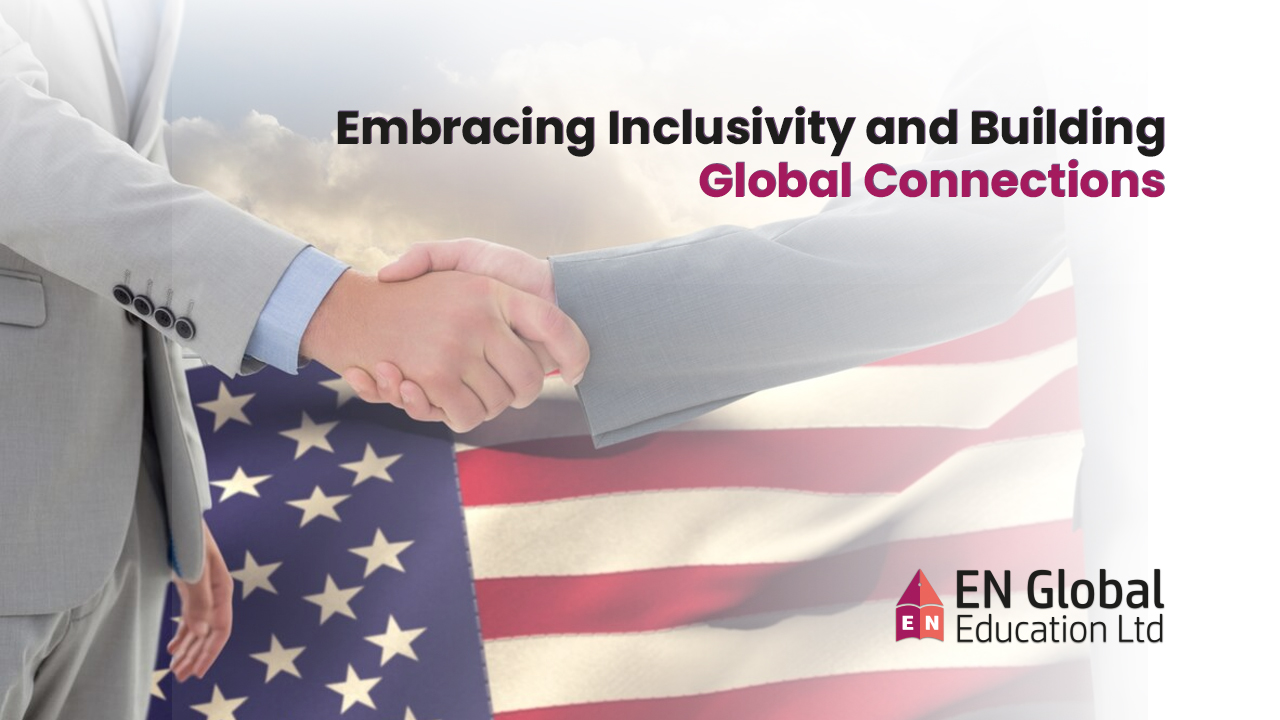The landscape of higher education in the United States has undergone a profound transformation in
recent decades, marked by an increasing emphasis on cultural diversity and inclusivity. As American
campuses welcome a diverse array of students from around the world, the tapestry of cultural
backgrounds, perspectives, and experiences has become a defining feature of the educational journey.
This article explores the significance of cultural diversity on US campuses, emphasizing the importance
of embracing inclusivity and fostering global connections.
Both universities and colleges in the USA, such as the University of Maryland, Harvey Mudd College,
Georgia Gwinnett College, Massachusetts Institute of Technology, etc. all welcome overseas students
and maintain a very inclusive environment. According to the SEVP, there were nearly 1.4 million active
records for F-1 and M-1 students in 2022, a 10% increase from 2021 and the largest number of records
since 2019. All four regions of the US—the Northeast, Midwest, South, and West—saw an increase in
international student records of between 8% and 11%. The Northeast saw the greatest increase at
11.6%, closely followed by the Midwest, which welcomed 11.5% more international students.
Benefits of Cultural Diversity:
Enhanced Learning Environments: Cultural diversity enriches the educational experience by exposing
students to a variety of perspectives, traditions, and worldviews. This exposure fosters critical thinking
and broadens intellectual horizons, preparing students to navigate an increasingly interconnected global
society. For example, the University of Notre Dame. Ranked 210 in QS Rankings 2020 and 157 in THE World
University Rankings 2020 not only help foreign aspirants develop holistic skills but also gives them
the chance to spend semesters in various universities across the globe.
Cultural Competence: Interacting with peers from different cultural backgrounds equips students with
valuable skills in cultural competence. This proficiency is essential in today’s globalized workforce, where
Collaboration with individuals from diverse backgrounds is the norm.
Researchers at Duke University surveyed alumni from several universities roughly 5, 10, and 20 years
after graduation. The study found that U.S. students who actively interacted with international students
reported better self-confidence, leadership, quantitative skills, and overall intellectual growth. Later in
life, participants were more likely to appreciate art and literature and be able to place current problems in
a historical context, read or speak a foreign language, reexamine their political and religious beliefs, and
reassess their beliefs about other races or ethnicities.
Preparation for Global Citizenship: USA campuses serve as microcosms of the world, preparing students
to be global citizens. Exposure to diverse cultures promotes a sense of interconnectedness, encouraging
students to become empathetic and engaged participants in a global community.
According to findings in 2019 by the UK-based Higher Education Policy Institute (HEPI), the United States
is the most popular place of study for overseas students who go on to become political leaders in their
home countries. This is significant because research has found that when international students develop
positive relationships with their host countries, they are more likely to have future visits do business
and maintain fruitful relationships with that country.
Inclusivity Initiatives: Recognizing the importance of inclusivity, universities across the United States
have implemented a range of initiatives to create a welcoming environment for students of all
backgrounds. These initiatives include:
Diversity and Inclusion Offices: Many universities have established dedicated offices to promote
diversity and inclusion. These offices work to address issues related to bias, discrimination, and
inequality, while also organizing events and programs that celebrate diverse cultures.
Cultural Exchange Programs: To foster global connections, universities often facilitate cultural exchange
programs, enabling students to study abroad or engage in international collaborations. These
experiences not only broaden academic perspectives but also create lasting cross-cultural friendships.
Multicultural Student Organizations: Campuses host a plethora of student organizations that celebrate
various cultural identities. These groups provide a platform for students to connect with others who
share their background, fostering a sense of community and support.
Challenges and Solutions: Despite the progress made, challenges related to cultural diversity persist on
USA campuses. Issues such as unconscious bias, cultural insensitivity, and unequal access to resources
may hinder the full realization of an inclusive environment. To address these challenges, ongoing efforts
are essential:
Education and Training: Institutions can implement training programs to educate students, faculty, and
staff about the importance of cultural competence. This includes raising awareness about unconscious
biases and providing tools for fostering an inclusive atmosphere.
Community Engagement: Encouraging open dialogue and creating spaces for intercultural exchange can
break down barriers and promote understanding. Community engagement initiatives that involve
students, faculty, and local communities contribute to the development of a more inclusive campus
culture.
Embracing inclusivity and building global connections are not just academic pursuits but essential
components of preparing students for the challenges and opportunities of an interconnected world. By
continuing to prioritize diversity and fostering a culture of respect and understanding, USA campuses
can lead the way in creating a more inclusive and globally-minded generation of students.



